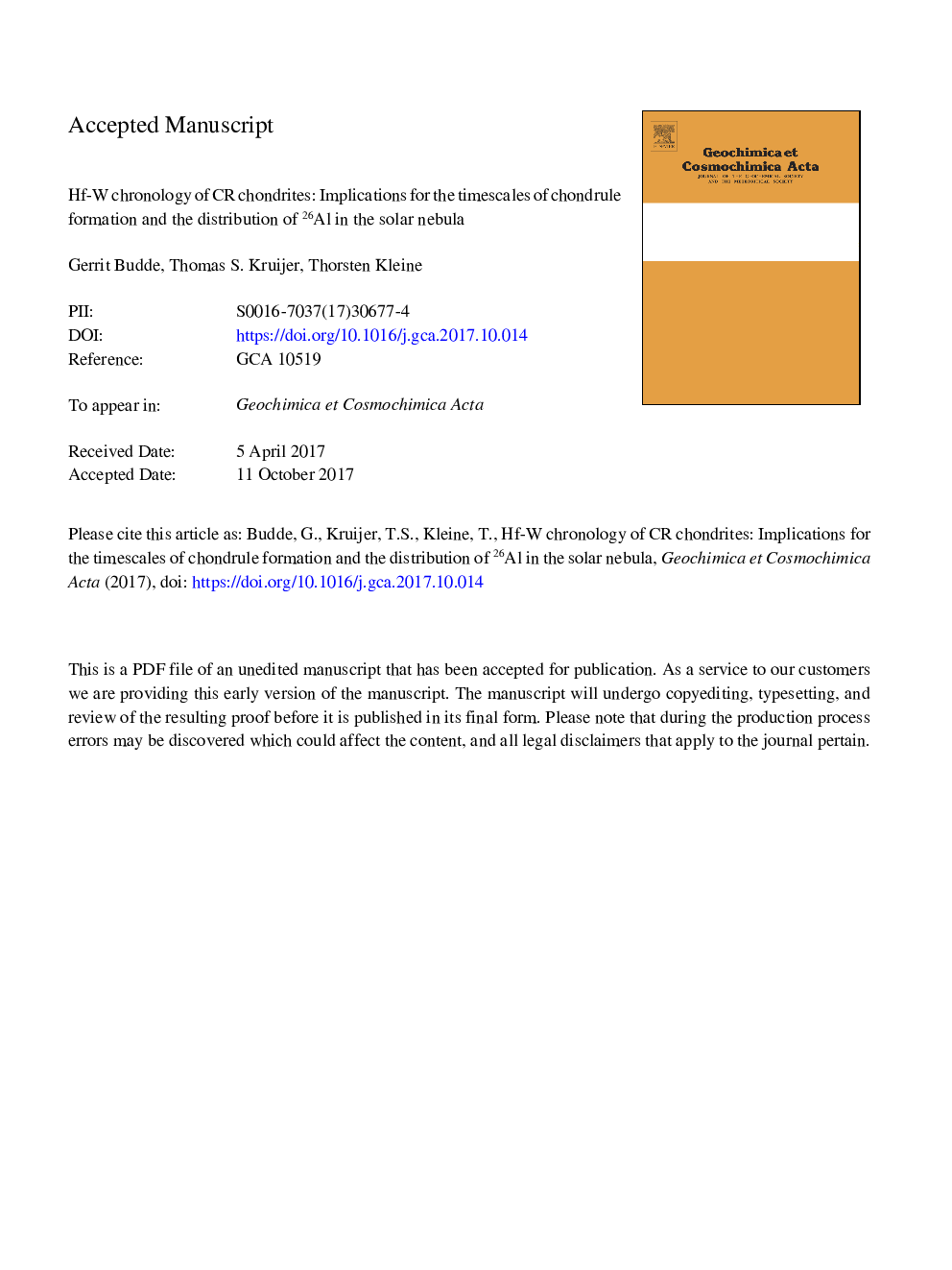| Article ID | Journal | Published Year | Pages | File Type |
|---|---|---|---|---|
| 8910947 | Geochimica et Cosmochimica Acta | 2018 | 49 Pages |
Abstract
Metal and silicate in CR chondrites exhibit distinct nucleosynthetic Mo and W isotope anomalies, which are caused by the heterogeneous distribution of the same presolar s-process carrier. These data suggest that the major components of CR chondrites are genetically linked and therefore formed from a single reservoir of nebular dust, most likely by localized melting events within the solar protoplanetary disk. Taken together, the chemical, isotopic, and chronological data for components of CR chondrites imply a close temporal link between chondrule formation and chondrite accretion, indicating that the CR chondrite parent body is one of the youngest meteorite parent bodies. The relatively late accretion of the CR parent body is consistent with its isotopic composition (for instance the elevated 15N/14N) that suggests a formation at a larger heliocentric distance, probably beyond the orbit of Jupiter. As such, the accretion age of the CR chondrite parent body of â¼3.6 Ma after CAI formation provides the earliest possible time at which Jupiter's growth could have led to scattering of carbonaceous meteorite parent bodies from beyond its orbit into the inner solar system.
Related Topics
Physical Sciences and Engineering
Earth and Planetary Sciences
Geochemistry and Petrology
Authors
Gerrit Budde, Thomas S. Kruijer, Thorsten Kleine,
